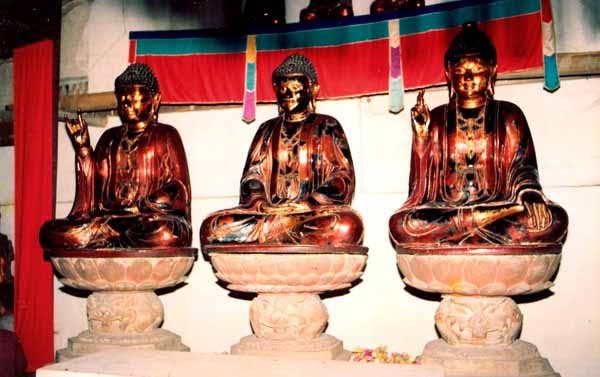Archaeological exploration and excavation work at three ancient pagodas in the northern province of Hải Dương has been licensed by the Ministry of Culture, Sports and Tourism.

Sùng Nghiêm Pagoda used to be a Buddhist centre of Việt Nam during the Trần dynasty. Photo haiduong.gov.vn
The work at Sùng Nghiêm, Huyền Thiên and Thanh Mai pagodas will be carried out by the Hải Dương Provincial Department of Culture, Sports and Tourism in coordination with Việt Nam Archaeological Association, from July 15 to October 15
The excavation over a total of 420sq.m, the vast majority at Thanh Mai, will be presided over by Dr Bùi Văn Liêm from the Việt Nam Archaeological Association
According to the Ministry of Culture, Sports and Tourism, the licensed agencies must protect the stratigraphy of the areas and explain the excavation to locals people to raise their awareness of local cultural heritage. Additionally, they are not allowed to announce the results of the excavation without the agreement of the governing body and the Department of Cultural Heritage.
Meanwhile, the Hải Dương Provincial Museum and the Department of Culture, Sports and Tourism are responsible for preserving the artefacts collected during the excavation and submitting a report on how to protect the artefacts to the ministry.
After completing the exploration and excavation, the Hải Dương Provincial Department of Culture, Sports and Tourism and the Việt Nam Archaeological Association have to make a preliminary report and propose a plan to protect the area that has been explored and exploited.

Sùng Nghiêm Pagoda preserves many ancient Buddha statues. Photo phatgiao.org.vn
Located in Bình Giang Village in Phả Lại Town, Sùng Nghiêm Pagoda was built during the Lý dynasty (1009-1225) to the Trần dynasty (1225-1400) and was a Buddhist centre of Việt Nam during the Trần dynasty.
The pagoda was frequently visited by the monks of Trúc Lâm Zen to preach as well as queens and concubines of the Trần dynasty to enjoy the scenery and conduct ceremonies to pray for prosperity. At that time, the building consisted of more than 100 rooms, however, it was burned down by French troops in 1947. Now the pagoda only preserves some remaining traces and artefacts.
Located on Ông Sư Mountain of Phượng Hoàng Range in Chí Linh District, Huyền Thiên Pagoda has original architectural works that harmoniously combine with the surrounding natural landscape. It was one of the largest buildings of Việt Nam during the Lý-Trần dynasties.
Over nearly a thousand years, the pagoda has suffered from severe degradation, damage and been abandoned for a long time before a smaller version was rebuilt by locals.

Thanh Mai Pagoda has been recognised as a national historical site since 1992. VNA/VNS Photo Trần Mai Hưởng
Thanh Mai Pagoda is within the system of pagodas belonging to Trúc Lâm Yên Tử Zen Buddhism. The structure was built in the 14th century on the slopes of Thanh Mai Mountain. After being renovated and expanded by the Second Patriarch Pháp Loa, Thanh Mai Pagoda developed and became the ancestral place of the Trúc Lâm Zen sect.
The pagoda attracts visitors thanks to its unique cultural values and surrounding scenic landscape. It was recognised as a national historical site in 1992.